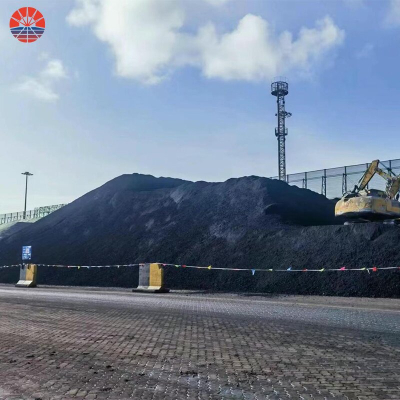Venezuelan Petcoke
The use of petroleum coke (petcoke) in an aluminum plant can provide several benefits due to its high carbon content and calorific value. Petcoke is commonly utilized in the aluminum industry for specific applications, such as in the production of aluminum anodes used in the electrolytic process to extract aluminum from alumina. Here are some of the advantages of using petcoke in an aluminum plant:
Carbon Source for Anodes: Petcoke is a preferred carbon source for manufacturing anodes used in the Hall-Héroult process, which is the primary method for producing aluminum. Anodes are essential components of the electrolytic cells used to extract aluminum from alumina (aluminum oxide). Petcoke's high carbon content makes it an ideal material for producing high-quality anodes.
High Calorific Value: Petcoke has a high calorific value, providing a significant amount of heat energy during the anode baking process. Baking the anodes at high temperatures helps improve their electrical conductivity and structural integrity, making them more efficient in the aluminum production process.
Low Ash Content: Petcoke typically has lower ash content compared to other carbon sources like coal. A lower ash content in the petcoke helps in producing cleaner and more reliable anodes, reducing impurities in the aluminum production process.
Cost-Effectiveness: Petcoke is often more cost-effective than other carbon sources used in the production of aluminum anodes, making it an economically attractive option for aluminum plants.
Consistent Quality: Petcoke production is relatively standardized, and the material is typically available in a consistent quality, ensuring reliability in the anode manufacturing process.
Reduced Environmental Impact: Using petcoke in the aluminum industry can lead to reduced greenhouse gas emissions compared to some other carbon sources. Its lower sulfur content can also help minimize sulfur-related impurities in the aluminum produced.
Despite these advantages, it is crucial to address the environmental and health considerations associated with the use of petcoke. The combustion of petcoke releases carbon dioxide (CO2) and other pollutants, which contribute to climate change and air pollution. Additionally, petcoke may contain trace elements and impurities that can pose environmental and health concerns when not properly managed.
Therefore, aluminum plants, like other industries, are increasingly exploring cleaner and more sustainable practices to minimize their environmental footprint. This includes the development and adoption of more efficient and environmentally friendly technologies in aluminum production, such as energy-efficient electrolytic processes and the use of renewable energy sources.
The Role Of Using Petroleum Coke In Aluminum Plant
The primary role of using petroleum coke (petcoke) in an aluminum plant is to produce carbon anodes, which are crucial components used in the aluminum electrolysis process. The aluminum production process involves the extraction of aluminum metal from alumina (aluminum oxide) through an electrolytic process called the Hall-Héroult process. Petcoke plays a vital role in this process as follows:
Carbon Anode Production: Petcoke serves as the primary raw material for manufacturing carbon anodes. Carbon anodes are blocks or rods made predominantly of carbonaceous material, and they are consumed during the electrolytic process.
Electrical Conductivity: The primary function of carbon anodes is to conduct electrical current from the power source to the alumina in the electrolytic cell. The high carbon content of petcoke ensures that the anodes have excellent electrical conductivity, enabling efficient and effective aluminum production.
Electrolysis: In the Hall-Héroult process, alumina is dissolved in a molten cryolite electrolyte bath within the electrolytic cell. When electrical current passes through the carbon anodes, oxygen is generated at the anode's surface from the alumina, releasing carbon dioxide. This process separates the oxygen from the aluminum in the alumina, resulting in the production of aluminum metal at the cathode.
Anode Consumable: During electrolysis, carbon anodes are gradually consumed, and they need to be periodically replaced. The choice of anode material, including the type of petcoke used, can impact the efficiency, cost, and environmental performance of the aluminum production process.
It's important to highlight that while petcoke is widely used in the aluminum industry for anode production, there are also environmental and health considerations associated with its usage. The combustion of petcoke releases greenhouse gases and air pollutants, such as sulfur dioxide (SO2) and nitrogen oxides (NOx), which can contribute to climate change and air pollution. As a result, there is a growing interest in the aluminum industry to explore more sustainable and environmentally friendly alternatives to conventional petcoke-based anodes. This includes research into new carbon sources, like baked carbon anodes made from renewable or recycled materials, as well as efforts to improve the overall energy efficiency of the aluminum production process.












